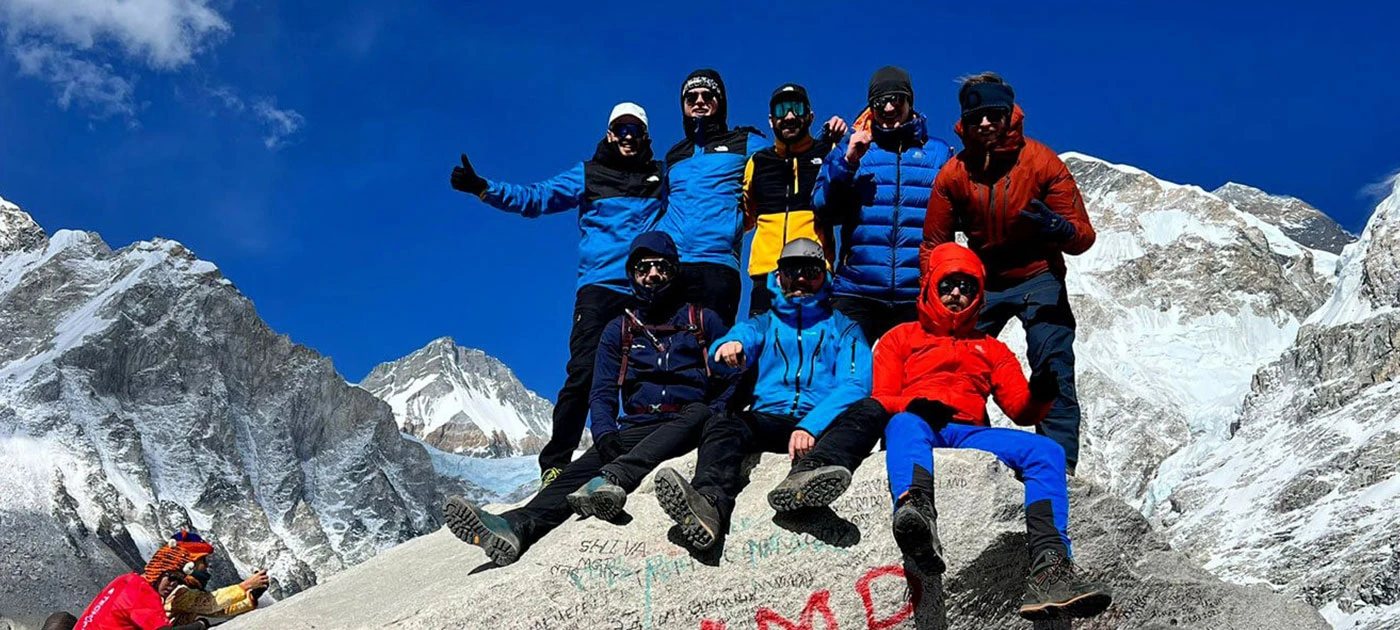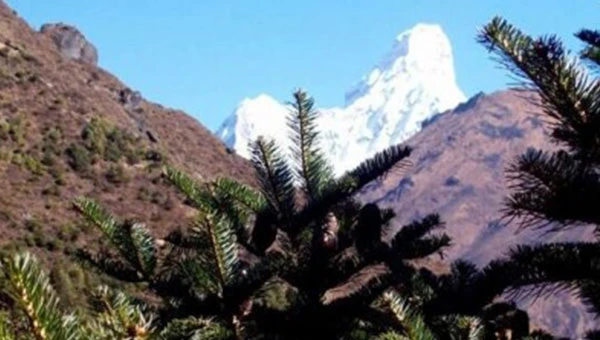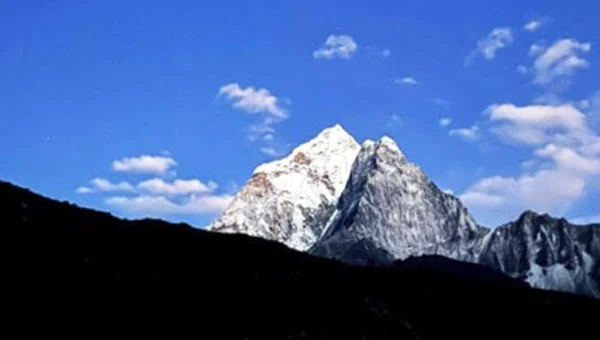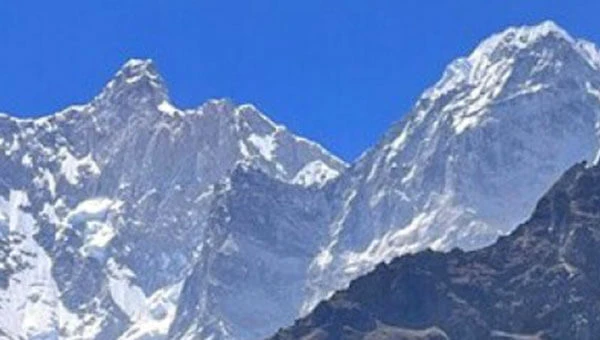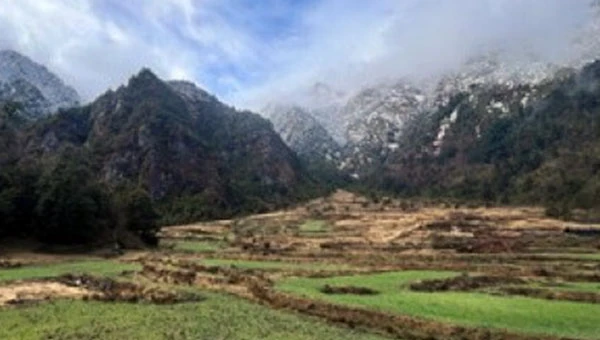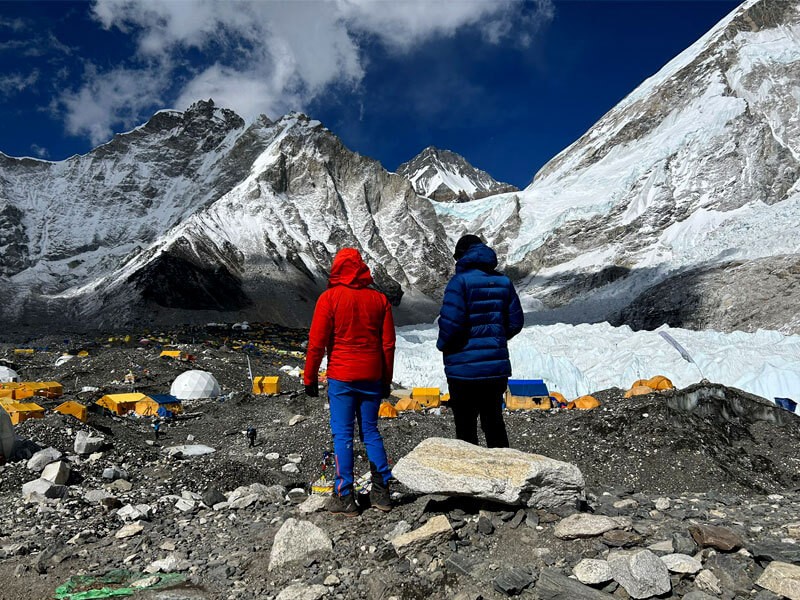
Is The Blossoming Season Of Spring The Best Time For Everest Base Camp Trek?
The spring season falls in the month of March, April, and May. The spring comes with its vibrating aurora as nature comes alive after the dry cold winter. The days get pleasant with mild temperatures. The blossoming of flora makes the time even more living and fresh providing the freshness to start a Nepali new year with great zeal. The season got a festive vibe as the color festive, Holi, and Nepali New Year falls at this time of the year.
The skies get clearer reflecting the beauty of blue sky. The weather will be stable. As a result, the views of the majestic Himalayas can be enjoyed, so many trekkers from all around visit Nepal for trekking.
The best months are March-April-May for the Everest base camp trek. The stable weather and clear skies provide breathtaking vistas of the mighty Himalayas. So it is the busiest time in the Everest region.
Everest Base Camp Trek in March
March marks the beginning of spring and ends the winter season so the days get longer and warmer but at high altitudes, the temperature will be still quite cold so carry warm clothing. Since it is the beginning of the season, the trails be less crowded compared to April and May. There will be good availability of teahouses.
The sky and the visibility get clearer offering breathtaking vistas of the mighty mountain, Mt.Everest, and surrounding peaks. The trails will be decorated by varieties of colorful rhododendrons. The landscape will be scenic.
Everest Base Camp Trek in April
April is the busiest month of the year for the Everest base camp trek. The reason is that the weather will be stable providing scenic, clearer views of Everest and other Himalayas. You will meet many other enthusiastic trekkers on the way to Everest base camp. The trail will be full of porters and animals maintaining a large number of climbers at Everest base camp, aiming to summit the mighty Mt. Everest.
Since April is the peak month, it is recommended to book the accommodations in advance before trekking so the rooms will be available on arrival. Nepali New Year also falls in this month. You will witness and get to experience the local cultural celebrations, adding cultural enrichment to your trekking experience.
Everest Base Camp Trek in May
If you want to go Everest base camp trek during summer time, then May is the most favorable for you. May is the warmest month to visit Everest base camp as the monsoon will be moving forward to the north from India, causing warmer temperatures and more cloud coverage. So sometimes the views can be disturbed by the clouds, we can’t guarantee as the weather in the mountains is unpredictable and now due to global warming, it is more severe.
May is the month of a weather window to summit Mt.Everest so all the climbers and mountaineers waiting for the summit pushup at Base camp start their ascent.
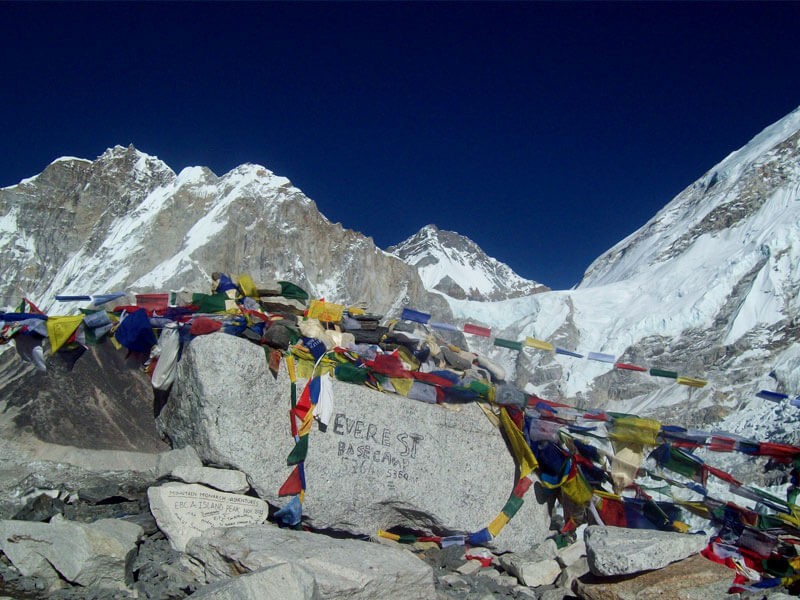
Can Anyone Embark On The Journey To Everest Base Camp Trek During Monsoon Rain?
In Nepal, the monsoon rain begins mainly in the month of June and ends in August. There will be heavy rainfall and cloud coverage in the skies so the visibility won’t be more precise. But there will be a brief time when the clouds get clear allowing a pleasing landscape of the Himalayas, and hills. The weather will be warmer, humid. Nature gets so lush and greenish providing an excellent experience.
Everest Base Camp Trek in June, July, and August
If you are a rain lover, you can embark on your journey to Everest base camp. The hills and forest get green and lush. The flowing rivers and cascading waterfalls make the trek even more enjoyable.
Trekking to Everest base camp in the monsoon is rewarding yet challenging too. The trails will be muddy and slippery so you must walk with caution. There is a high chance of landslides and avalanches during this period hence always best to have a local guide knowing the potential areas and who knows the region very well.
The mountains’ view will be obstructed by the clouds so the view won’t be clearer. But there will be a brief time when the clouds get clear allowing you to enjoy the breathtaking panoramas of the Mighty Mountains. Sometimes the accommodation lodges get closed, so it is recommended to have contingency plans for the unforeseen.
You need to prepare gear for the monsoon. You should have a raincoat, waterproof clothing, a rain cover for the backpack, and sturdy trekking boots. It is advisable to carry adequate clothes as the weather will be wet and cold. Importantly there will be leeches so be prepared and carry insect repellant or wear leeches socks that keep the leeches away.
Why Is The Autumn Season The Best Time For Everest Base Camp Trek?
Autumn falls in the month of September, October, and November. The cooling temperatures and vibrant nature make autumn liked by everyone. The greatest festival of Nepal – Dashain and Tihar fall in the autumn season. The whole country’s atmosphere will be festive and joyous, reflecting the long traditional culture and ceremonies of Nepalese.
The weather will be mild and stable providing excellent visibility with clear blue skies. Hence majestic mountain vistas can be witnessed in the High Himalayan.
Everest Base Camp Trek in September
September marks the beginning of the trekking season. The weather will be moderate and pleasant in September. You can experience excellent vistas of the Mighty Mountains and lush and green vegetation on the trails. There will be little possibility of precipitation during the month of September causing trouble so you need to have a few days more in case of some delays and pack appropriate rain gear.
Everest Base Camp Trek in October
October is the busiest time of the year in Everest base camp as the trails will be crowded with a lot of trekkers and porters. Stable weather conditions, clearer skies, and fewer clouds resulting in unobstructed vistas of mighty mountains make the time ideal for trekking to Everest base camp.
The major festive of Nepal- Dashain and Tihar fall in this month. The atmosphere will get so vibrant and lively all over the country that you can feel it if you embark on your journey to Everest base camp during this time of the year. You will get to experience the local culture, traditions, and rituals making the journey even more culturally enriching.
Everest Base Camp Trek in November
November is also one of the best times for trekking to the Everest base camp. Since the monsoon has passed, there won’t be rainfall and fewer clouds. Generally, the weather will be stable and the visibility clearer. The clearer skies offer awe-inspiring vistas of the mighty mountains. The weather will be a bit cold bringing the crisp and refreshing air. The trails will be less crowded as there will be few trekkers.
The weather will start getting cold. The temperatures will be colder at night, below zero. So pack warm, tough layers of clothes, and don’t forget to carry sleeping bags for warm sleep at night.
How Hard Is It to Trek Everest Base Camp in Winter Season?
December, January, and February are the winter months in Nepal. Nepal experiences cold and dry weather. The temperatures range from 5 degrees Celsius to 18 degrees Celsius in lower elevations like Kathmandu while the temperatures drop below freezing at higher elevations. There is snowfall in the higher elevation of Nepal.
Everest Base Camp Trek in December, January, and February
Trekking to Everest Base Camp in winter gives a different experience to trekkers compared to peak season. In winter, the morning is generally clear so you can have awe-inspiring vistas of the Mighty Mountains and have excellent photographs.
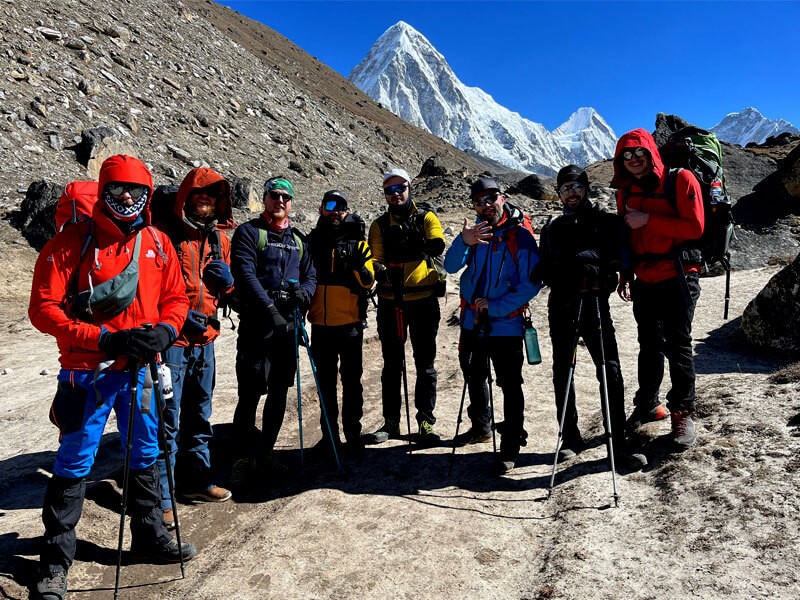
Since it is off-season, there will be few trekkers on the trails hence you can experience a serene and peaceful hike to Everest Base camp. Don’t trek alone as it could be risky due to the possibility of landslides, and avalanches. The trail might be slippery due to snow so walk with caution and must be accompanied by a guide.
Trekking in winter is quite challenging as there will be heavy snowfall in the nights but they are clear in the day. You should pack proper clothing and equipment for extreme cold temperatures. Make a booking and confirmation of accommodations before the start of the trek because there will be limited teahouses providing services in the winter season.
You can trek Everest Base Camp in winter without any doubt but you need careful planning including warm clothing, proper trekking boots, sleeping bags, and other essential gear. Have up-to-date weather information and trail conditions from the local authorities. In this way, you can have the best trekking experience in winter.
There are many other trekking routes and packages in the Everest region like Everest Gokyo Trek, Everest Three Passes Trek, Everest Base Camp Trek and Fly Back Helicopter, Everest View Trek, and Everest Base Camp Luxury Trek. You can hike these trekking destinations during spring (March-May) and autumn (September to November). Find our Everest Trekking Packages.
In the end,
Every season has its distinctness providing trekkers with variable experiences. Be they monsoon lovers or summer travelers, it provides something to all kinds of trekkers.
The best time for Everest Base Camp Trek is spring (March-May) and autumn (September to November) seasons. This time provides you with remarkable experiences as the weather will be favorable – mild and moderate with no rainfall and snowfall - clear skies, offering mesmerizing vistas of surrounding mountains. You can have the best trek ever in the Everest region.
Winter and monsoon are less favorable seasons as there will be few challenges while trekking to Everest Base Camp. The weather won’t be stable and the visibility will be poor—rainfall in monsoon and snow in the winter season. So we highly recommend the spring and autumn seasons for Everest Base Camp Trek.
Hope this blog answers your curiosity about when to trek Everest Base Camp and guides you to choose the perfect time as per your preferences. Find our Everest Base Camp Trek Packages. We are highly flexible to customize the packages as per your preferences. Let us know.
